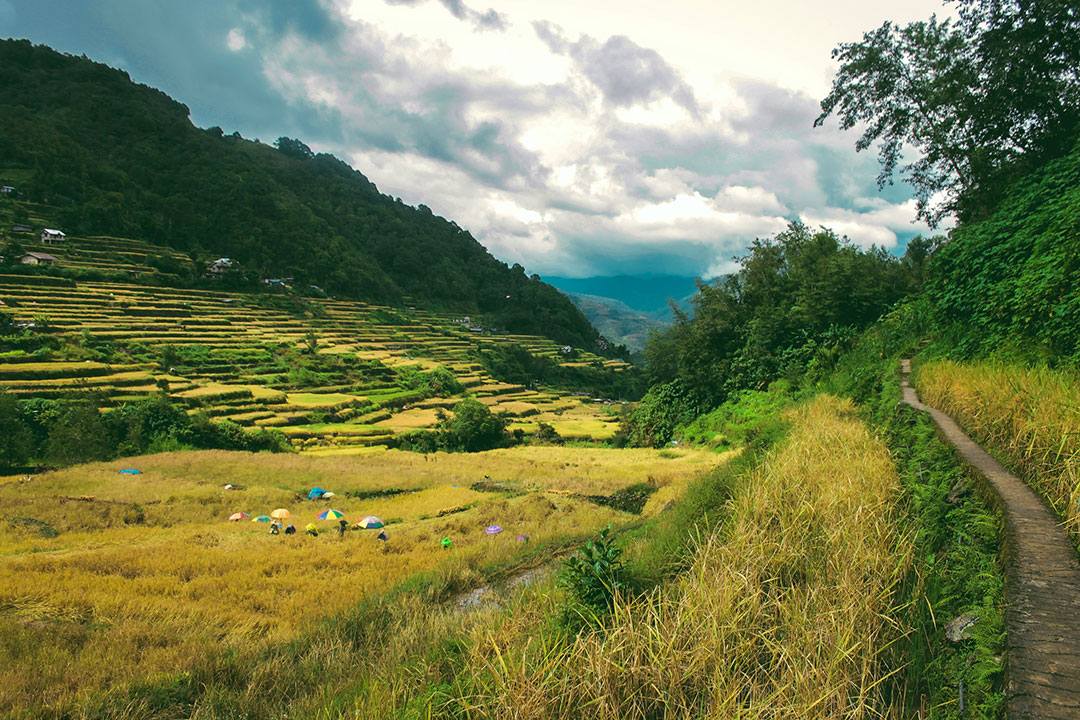By BusinessWorld,Cedtyclea
Copyright bworldonline

By Kent Nnadozie and Lionel Dabbadie
AS THE WORLD gathers in Manila for the Second Global Symposium on Farmers’ Rights, generously hosted by the Government of the Philippines, we are called to reflect not only on the lessons and legacy of the past, but also on the aspirations and responsibilities for the future.
The theme of the Second Global Symposium, “Farmers’ Rights: Honoring Heritage, Preserving Biodiversity and Cultivating Food Security for a Shared Future,” captures the essence of a fundamental reality, but which is not always recognized — that farmers are not just food producers. They are stewards of agrobiodiversity, innovators of crop adaptation, and guardians of the genetic resources that sustain us and enrich our planet.
At the heart of the International Treaty on Plant Genetic Resources for Food and Agriculture lies Article 9, Farmers’ Rights. This is not a peripheral clause. It is the moral and legal recognition of farmers’ profound and continuing contribution to the conservation and development of plant genetic resources, especially those cultivated and maintained over generations in traditional farming systems.
HONORING HERITAGE
The crops we depend on today — wheat, rice, maize, millet, and thousands more — carry within them the stories and imprints of countless farmers, indigenous peoples, and local communities who, for millennia, selected seeds not just for yield, but for resilience, taste, nutrition, and cultural significance.
In the Philippines, agrobiodiversity is not just a scientific concept. It is a living portfolio of resilience, nutrition, and cultural heritage. From the terraces of the Cordillera to farms of Lake Sebu, farmers and Indigenous Peoples have cultivated and preserved a wealth of traditional rice, vegetable, roots, fruits, and other crop varieties that feed families, sustain livelihoods, and anchor local economies. These are not relics of the past. They are the foundation of food security and climate resilience.
This is why initiatives such as the United Nations’ Food and Agriculture Organization’s (FAO) Agrobiodiversity Conservation Project, which supported community seed banks and policy integration, and new proposals under the Global Biodiversity Framework Fund, are vital. To honor that heritage means more than remembering. It means ensuring that traditional knowledge is protected, that farmers’ seed systems are supported, and that customary practices are not marginalized by one-size-fits-all approaches to agricultural production and development. The recognition of the Ifugao Rice Terraces as a Globally Important Agricultural Heritage System (GIAHS) further reminds us that protecting biodiversity means protecting the communities and landscapes that sustain it.
CONSERVING BIODIVERSITY
The world is confronting a multitude of crises: biodiversity loss, climate shocks, and geopolitical conflicts, and the erosion of crop diversity is among its silent casualties. When local varieties are neglected or lost, when informal seed exchange is restricted, we don’t just lose genetic traits, we lose options for the future.
Farmers’ Rights, including the right to save, use, exchange, and sell farm-saved seed, are essential to conserving biodiversity on farms and across landscapes. It is through these rights that farmers maintain the rich plant genetic material needed to adapt to climate change, pests, and shifting ecosystems. Farmers are the quiet custodians of genetic wisdom, cultivating the diversity we need to weather tomorrow’s storms.
CULTIVATING FOOD SECURITY
Food security is cultivated in the fields of smallholder farmers, women seed keepers, community seed banks, and farmer-breeders. These are the people who work and help feed the world.
Securing Farmers’ Rights also means creating political space and enabling participation in decision-making, as well as ensuring equitable benefit-sharing. It also means recognizing the diversity of legal and cultural systems that shape how rights are understood and implemented around the world.
A SHARED FUTURE
Over the years, the International Treaty has supported a growing global dialogue on Farmers’ Rights, including through the development of an Inventory of National Measures, Best Practices, and Lessons Learned, which showcases real-world examples of how countries and communities are advancing the implementation of Article 9. In addition, the Options for the Realization of Farmers’ Rights provide a flexible and practical toolbox to guide governments, stakeholders, and partners in translating commitments into concrete actions that respond to national needs, contexts and priorities.
The Second Global Symposium on Farmers’ Rights is not just a forum, it is a milestone. Since the First Farmers’ Rights Global Symposium in India in 2023, we have seen growing awareness, but also new challenges. Digital sequence information, national and international policy developments, and the impacts of climate change, including biodiversity loss, all raise urgent questions about how Farmers’ Rights can be realized in practice, not just promised in principle.
As we gather in Manila, let us reaffirm that the future of food does not lie in homogeneity, but in diversity — of seeds, of knowledge, of practices and of the people who nurture them. Let us recognize Farmers’ Rights as fundamental for sustainable global food security.
Let us move from commitment to implementation, from dialogue to action, because when we protect the rights of farmers, we plant the seeds of a more just, resilient and food-secure world.
Kent Nnadozie is the secretary of the International Treaty on Plant Genetic Resources for Food and Agriculture. Lionel Dabbadie is the representative of the Food and Agriculture Organization of the United Nations in the Philippines.



